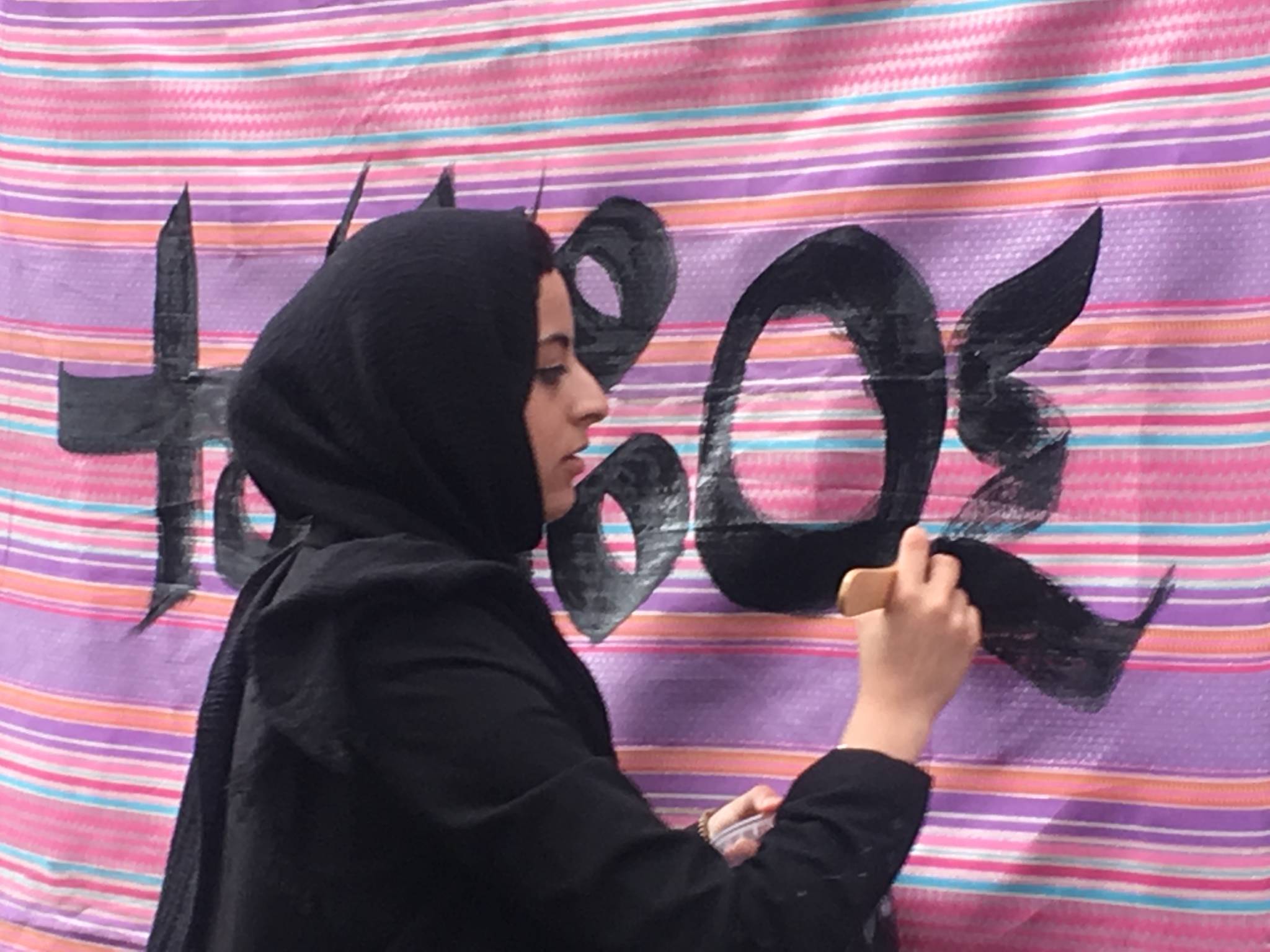We use Cookies. Read our Terms
- News
- Art and expression in Libya
Art and expression in Libya
WaraQ Art Foundation showcases the work of young contemporary Libyan artists at home and abroad.

Takwa Barnosa writing ‘art’ in Arabic and her native language Amazighe.
Photo: OFID/Fatma Elzahra Elshhati
Up and coming artist Takwa Barnosa has an ambitious goal: to revive the art scene in Libya. In 2015, then 17 years-old, Barnosa founded the WaraQ Art Foundation with the aim of promoting free expression among young people in Libya. Since then, she has been the organizer and curator for exhibitions held both at home in Libya and abroad.
The Foundation’s latest international exhibition entitled ‘Across Borders’ was held in Vienna and showcased the work of 11 young contemporary Libyan artists.
“The exhibition encouraged artists to challenge their own boundaries and the borders that surround them – personal, social, political and geographical borders,” Barnosa explains to the OFID Quarterly.
In her own work, Barnosa offers commentary on current social issues through calligraphy and photography. In the Vienna exhibition, Barnosa’s Arabic calligraphy spells out the words ‘commodity’, ‘fear’ and ‘failure’. The words are superimposed onto photographs of refugees crossing the Mediterranean on dinghies.
“I realized that the best way to start a career as a curator and cultural manager was to learn by doing,” Barnosa says. “So I invested all my education savings on the Foundation’s start-up. The opening of our ‘work space’ was in 2016 – it was the first independent work space and gallery since the revolution.”
It’s been a tough task to highlight contemporary issues in a country still healing from conflict. “We faced different challenges when it came to acceptance, security and funding,” she continues. Following the Foundation’s exhibition focusing on human rights, WaraQ’s space was shut down in 2017. However, Barnosa explains that she – and fellow artists – were inspired to continue work, expanding to a wider audience and promoting Libyan artists locally and internationally.
“What we need urgently at the moment is to raise awareness about the importance of art in our daily life, specifically in a post-conflict society like the one we live in,” Barnosa says. “This can be achieved by focusing on audience development and targeting the public with all its differences.”
With this in mind, the WaraQ Art Foundation is bringing art into public spaces to promote the values of openness and inclusivity. Using the city as their canvas, young artists are showcasing their work. “We see the public space as an alternative for the absence of art galleries and cultural institutions,” Barnosa says. “If we can’t have our freedom of expression in our own space, we go to the public, present what we do, integrate with them, and bring people
together through art.”
Another recent exhibition, held in August, marked International Youth Day. It was supported by the United Nations Population Fund (UNFPA) and held near the Red Castle Lake in the heart of Tripoli. The ‘Improvised’ exhibition was characterized by its experimental and inclusive approach to art and invited members of the public to engage in interactive sessions.
“We prepared the lake area to look like a studio and provided all the equipment,” explains Barnosa. “People could create artworks (in groups) with supervision and guidance from professional artists from WaraQ community.
“I can’t tell exactly how many people attended because it was a very open event in an open area,” she says. “But the crowd was craving more paint and brushes, and we ran out of canvas eventually.”